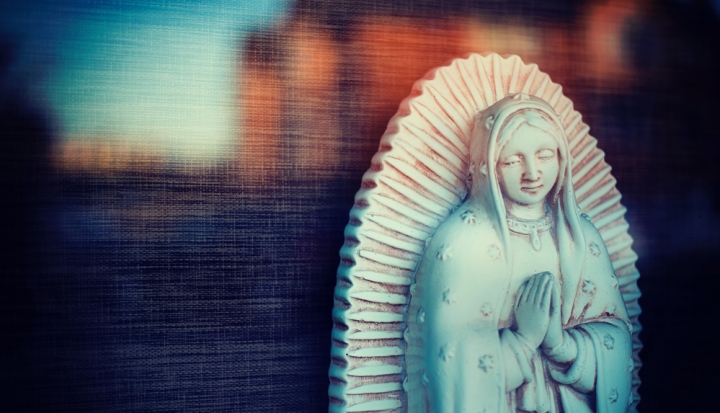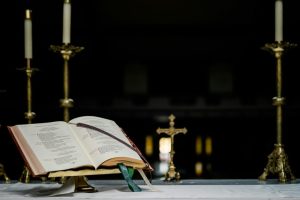The revelations about former-Wheeling-Charleston Bishop Michael Bransfield’s free-spending and sexual predations have given us a lot to think about. They come on the heels of all we have learned about former Cardinal Theodore McCarrick and the Pennsylvania bishops who moved abusive priests from church to church for too many years. Of course, all of that only mirrors what we have learned about Catholic bishops since Boston and in places like Los Angeles, Buffalo, St. Paul-Minneapolis, Kansas City, Galveston-Houston, and others. The problem is not confined to the United States, either.
Canon law requires that a bishop should be “outstanding for his solid faith, good morals, piety, zeal for souls, wisdom, prudence, and human virtues.” At this point, no one could argue that the church has done well by this canonical standard for its selection of bishops. The number of bishops who have done very bad things, who have covered up those misdeeds, and who simply must have known something was wrong is too staggeringly large.
We have to talk about the rot in the Roman Catholic episcopate.
The problem is complex, because it mingles canonical and sacramental issues. A bishop is a successor of the apostles chosen by Jesus. Diocesan bishops are also feudal barons invested with property, title, and power. To sack a bishop is not as simple as pensioning off a failed CEO. It strains too much the laws of the church and the sacramental identity of a bishop. Especially for that latter reason, it tears at the fibers of Catholic faith. That is not a dodge or an inconsequential issue. That’s a serious matter.
The privilege that comes with a special sacramental status and exclusive control over the church and its resources is not a new problem, either. We find it throughout history. St. Charles Borromeo chided bishops in 1569. St. Catherine of Siena was upbraiding the pope 200 years earlier. No matter the era, power in the hands of any bishop who lacks “solid faith, good morals, piety, zeal for souls, wisdom, prudence, and human virtues” can quickly trigger underlying pathologies that become metastatic, spreading sickness throughout the church.
Toxic episcopacy, toxic masculinity, and white privilege all share a common root in the absolutely corrupting potential of power in any form.
Not all bishops are bad, just as not all men are toxic and many white people acknowledge their privilege. These are not universal problems, just routine ones. Confining ourselves here to the problem among bishops, I think there is something interesting we should notice. The difference between bishops does not map itself on to the usual, polarizing arguments we have about liberals and conservatives.
Look at the list of bishops to whom Bishop Bransfield sent gifts: Cardinal Kevin Farrell and Archbishop Carlo Mario Viganò, Cardinal Timothy Dolan and Cardinal Donald Wuerl are not connected by clear ideological or theological lines. Instead, what unites these disparate churchmen is their proximity to power in Rome and Washington. Look too at the bishops who have been found to mishandle abuse cases. Bishop Accountability documents allegations of mishandling against Milwaukee’s Archbishop Jerome Listecki and Munich’s Cardinal Reinhard Marx, neither of whom is likely to agree about much with the other.
We should say that circumstances are complex in these cases and we do not want to draw too many easy comparisons. I simply want to observe that being “conservative” or “liberal” does not tell us much about a bishop. And, I would note that revulsion at bad behavior among bishops is notable for how it unites Catholics of all theological and ideological stripes.
We all know what a good bishop should look like. That is a shockingly easy thing to agree about: protect the vulnerable, tell the truth, put the gospel first, exhibit humility. What is harder to imagine is why—with hundreds of millions of Catholics in the world—it is so hard to find them. The church should be able to do better. Lots of laymen and laywomen can point the way. And, I can think of one, especially. I’d like to say a word about her.
I was lucky to be educated by the Marist Brothers, from whom I learned about Marist spirituality and “A Plea for a Marian Church.” For a long time, the “gentle woman, quiet light” has been held up as a model for laypeople: “be docile, be passive” seemed to be the implicit message about Mary, “pure and lowly.”
Yet, it seems at least as fitting that Mary, Our Good Mother, ought to inspire our church leaders, particularly bishops and especially now.
What would a Marian church look like? Marist Father François Mark reminds us that Mary did “not live in a castle. Her home is like all the other homes. She goes out to chat with the other villagers. She weeps with them, she rejoices with them, but she never preaches to them. Above all she listens.”
A Marian church is “not a church that multiplies processions or blesses huge statues…; rather a church that ‘lives the Gospel after the manner of Mary.’” That is to say, “she finds the abandoned on the side of the road, wounded by life, she is moved with compassion. With infinite tenderness, she tends their wounds. She is the safe harbor ever open, the refuge of sinners, mater misericordiae, the mother of mercy.”
Could our bishops be more like Mary, the mother of Jesus?
Holy Mary, Mother of God, pray for us in this, our exile. Together with your Son, cast down the mighty and lift up the lowly.
And, inspire us to build a Marian church.
Image: Unsplash cc via Tim Mossholder














Add comment